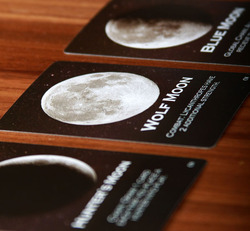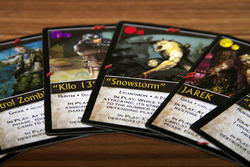Lords of Waterdeep Review
 Tuesday, September 25, 2012 at 06:34PM
Tuesday, September 25, 2012 at 06:34PM Lords of Waterdeep
Wizards of the Coast
Designed by Peter Lee and Rodney Thompson

Is this the best Ameritrash/Eurogame hybrid to date?
I'm fortunate to have two very distinct gaming groups—one which prefers old-school American-style hobby games (hereafter: Ameritrash) and another that mostly seems interested in the latest Eurogame hotness. For a gamer who likes all types of games, this is a huge luxury, but it also means that when I buy a game, it usually is only going to see play in one group or the other. For that reason, I've had my eye out for so-called hybrid games—games that appeal to both the Ameritrasher and the Eurogamer. The latest game to get pinned with that appellation is Wizard of the Coast's Lords of Waterdeep. After getting multiple plays in with both of my game groups, I'm ready to declare it the best crossover game I've yet come across and a very good game overall.
In Lords of Waterdeep, players take on the role of masterminds attempting to gain control of one of the flagship cities in the Forgotten Realms (one of Dungeons and Dragons two main universes). The players accomplish this by recruiting heroes of four different types (cleric, fighter, wizard, and rogue) and sending them on quests that earn the player influence (victory points) as well as other benefits. The game is played over eight rounds with the player who finishes with the most influence winning.
Mechanically, Waterdeep is a worker-placement game. Players have a certain number of agents that they can place onto locations on the board each turn. Placing agents allows the player to recruit heroes, that will be used to complete quests, or gain other benefits. After each placement, a player can complete a quest if he has the heroes in the correct number and colors. Like Caylus, there is a building mechanic that allows players to build and own locations that they get rewarded for each time an agent is placed there. To me, the game feels like a mix of Agricola and Caylus, but the mechanisms should be familiar to players of any worker-placement game.
The question when a game is so familiar mechanically is “what does it do better than other games in the genre?” Why play this instead of Stone Age, Caylus, Agricola, Ora and Labora, Dungeon Lords, Troyes, Dominant Species, Age of Empires III, Antiquity, Alien Frontiers, and In the Year of the Dragon (the worker-placement games currently in the Boardgamegeek top 100 games)? Well, I haven't played  all of those, but three are among my all-time favorite games (Age of Empires, Agricola, Caylus) and Waterdeep offers a few things that recommend it over (or as an alternative to) those great titles. First, it plays very quickly. The limit to eight turns makes for a quick game and the diminishing options available each placement means adding new players doesn't add much time per player. In my experience, four-player games run about an hour, three-player about forty-five minutes. With three players, I can get two games of Waterdeep in the amount of time I could play one game of Caylus (or set up one game of Dungeon Lords, but that is another issue, entirely). The other difference is what makes it a great game for my collection—the Ameritrash mechanisms included as chrome.
all of those, but three are among my all-time favorite games (Age of Empires, Agricola, Caylus) and Waterdeep offers a few things that recommend it over (or as an alternative to) those great titles. First, it plays very quickly. The limit to eight turns makes for a quick game and the diminishing options available each placement means adding new players doesn't add much time per player. In my experience, four-player games run about an hour, three-player about forty-five minutes. With three players, I can get two games of Waterdeep in the amount of time I could play one game of Caylus (or set up one game of Dungeon Lords, but that is another issue, entirely). The other difference is what makes it a great game for my collection—the Ameritrash mechanisms included as chrome.
The two elements that separate Waterdeep from the euro worker-placement games it will be compared to are the lords and the intrigue cards. Each player is randomly dealt a lord at the start of the game. These lords have special end-game bonuses and are kept secret from the other players. This keeps the victor in doubt right up until the final count. The intrigue cards introduce a level of take-that game play that is missing from the Eurogames. My favorite intrique cards are the mandatory quests, which can be played on an opponent forcing him or her to deal with them before completing quests of their own. Other cards allow players to break certain game rules for a one-time advantage. The cards are a very Ameritrash addition that add an element of surprise but don't add enough randomness to spoil the strategy.
It is those two elements that make the game more appealing to my Ameritrash group (along with the theme, since we are also a long-time D&D group). So far, the cards haven't provided enough of a swing that my Eurogame group were put off by them. The game has been requested multiple times by both groups, making it money well spent already and potentially one of my best bang-for-the-buck purchases in years.













